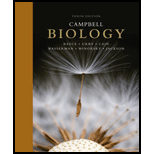
a)
To explain: The concept of pollen grain.
Introduction: Pollen grains are the tiny bodies in a seed plant that appears usually as a fine dust. Each pollen grain has a very minute body that varies in shape and structure and is formed in the anther (male apparatus) of seed-bearing plants. Pollens are transported by various means such as wind, insects, water,and so forth to the pistil (female structure) of the flower, wherefertilization takes place.
b)
To explain: The development of pollen grain.
Introduction: Pollen grains are the tiny bodies in a seed plant that appears usually as a fine dust. Each pollen grain has a very minute body that varies in shape and structure and is formed in the anther (male apparatus) of seed-bearing plants. Pollens are transported by various means such as wind, insects, water,and so forth to the pistil (female structure) of the flower, wherefertilization takes place.
c)
To explain: The function of pollen grain.
Introduction: Pollen grains are the tiny bodies in a seed plant that appears usually as a fine dust. Each pollen grain has a very minute body that varies in shape and structure and is formed in the anther (male apparatus) of seed-bearing plants. Pollens are transported by various means such as wind, insects, water,and so forth to the pistil (female structure) of the flower, wherefertilization takes place.
d)
To explain: How pollen was an important step toward seed plant to become dominant plants.
Introduction: Pollen grains are the tiny bodies in a seed plant that appears usually as a fine dust. Each pollen grain has a very minute body that varies in shape and structure and is formed in the anther (male apparatus) of seed-bearing plants. Pollens are transported by various means such as wind, insects, water,and so forth to the pistil (female structure) of the flower, wherefertilization takes place.
Want to see the full answer?
Check out a sample textbook solution
Chapter 38 Solutions
Campbell Biology Plus Masteringbiology
 Human Anatomy & Physiology (11th Edition)BiologyISBN:9780134580999Author:Elaine N. Marieb, Katja N. HoehnPublisher:PEARSON
Human Anatomy & Physiology (11th Edition)BiologyISBN:9780134580999Author:Elaine N. Marieb, Katja N. HoehnPublisher:PEARSON Biology 2eBiologyISBN:9781947172517Author:Matthew Douglas, Jung Choi, Mary Ann ClarkPublisher:OpenStax
Biology 2eBiologyISBN:9781947172517Author:Matthew Douglas, Jung Choi, Mary Ann ClarkPublisher:OpenStax Anatomy & PhysiologyBiologyISBN:9781259398629Author:McKinley, Michael P., O'loughlin, Valerie Dean, Bidle, Theresa StouterPublisher:Mcgraw Hill Education,
Anatomy & PhysiologyBiologyISBN:9781259398629Author:McKinley, Michael P., O'loughlin, Valerie Dean, Bidle, Theresa StouterPublisher:Mcgraw Hill Education, Molecular Biology of the Cell (Sixth Edition)BiologyISBN:9780815344322Author:Bruce Alberts, Alexander D. Johnson, Julian Lewis, David Morgan, Martin Raff, Keith Roberts, Peter WalterPublisher:W. W. Norton & Company
Molecular Biology of the Cell (Sixth Edition)BiologyISBN:9780815344322Author:Bruce Alberts, Alexander D. Johnson, Julian Lewis, David Morgan, Martin Raff, Keith Roberts, Peter WalterPublisher:W. W. Norton & Company Laboratory Manual For Human Anatomy & PhysiologyBiologyISBN:9781260159363Author:Martin, Terry R., Prentice-craver, CynthiaPublisher:McGraw-Hill Publishing Co.
Laboratory Manual For Human Anatomy & PhysiologyBiologyISBN:9781260159363Author:Martin, Terry R., Prentice-craver, CynthiaPublisher:McGraw-Hill Publishing Co. Inquiry Into Life (16th Edition)BiologyISBN:9781260231700Author:Sylvia S. Mader, Michael WindelspechtPublisher:McGraw Hill Education
Inquiry Into Life (16th Edition)BiologyISBN:9781260231700Author:Sylvia S. Mader, Michael WindelspechtPublisher:McGraw Hill Education





